Recent Posts
Effective Drying Techniques After Water Damage: Air Movers, Dehumidifiers, and More
3/12/2025 (Permalink)
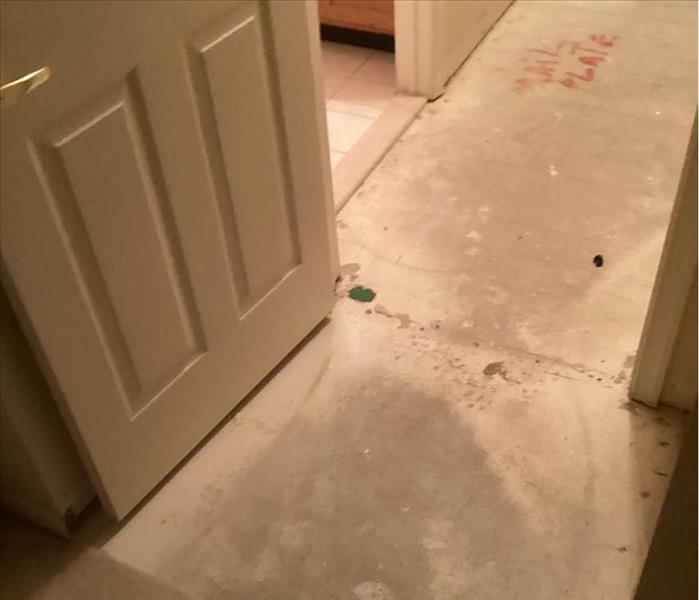 When water damage strikes in Sicklerville, NJ, time is of the essence.
When water damage strikes in Sicklerville, NJ, time is of the essence.
When water damage strikes in Sicklerville, NJ, time is of the essence. Whether caused by a burst pipe, flooding, or an appliance leak, excess moisture can quickly spread, leading to costly repairs. That’s why professional drying techniques are critical for restoring your home or business efficiently.
At SERVPRO®, we use industry-leading drying methods to eliminate moisture, prevent structural issues, and return your property to preloss condition. This guide covers expert-approved drying techniques, including air movers, dehumidifiers, and other specialized equipment to remove water effectively.
Why Drying Techniques Matter After Water Damage
Drying isn't just about letting water evaporate naturally—it’s a strategic process that speeds up evaporation and prevents further damage. Using the right techniques ensures that materials like drywall, wood, and flooring dry thoroughly, reducing the risk of long-term structural issues.
Professional restoration teams, like SERVPRO, rely on specialized equipment to accelerate drying. Here’s a closer look at the essential tools and techniques used in water damage restoration.
Top Drying Techniques Used in Water Damage Restoration
1. Air Movers: Accelerating Evaporation
Air movers, also known as high-velocity fans, are powerful tools that increase airflow across wet surfaces. By directing air at the right angle and speed, air movers enhance evaporation, making the drying process much faster.
How Air Movers Work:
- Create a continuous airflow over wet surfaces
- Prevent moisture from settling in building materials
- Reduce drying time by pushing moisture into the air
Strategically placing air movers ensures even drying throughout the affected area. These machines work best when used alongside dehumidifiers to capture excess moisture from the air.
2. Dehumidifiers: Extracting Moisture from the Air
Once moisture evaporates into the air, it needs to be removed before it settles elsewhere. This is where dehumidifiers come in. They pull moisture from the air and collect it in a tank or direct it out through a drain system.
There are two main types of dehumidifiers used in water damage restoration:
- Refrigerant Dehumidifiers – Work like an air conditioner, cooling the air to condense moisture.
- Desiccant Dehumidifiers – Use a drying material to absorb moisture, effective for large or heavily saturated areas.
Proper dehumidification ensures that the air in the space stays dry and balanced, preventing secondary moisture damage to walls, ceilings, and floors.
3. Injectidry Systems: Targeted Drying for Hard-to-Reach Areas
Some areas, like wall cavities and beneath flooring, are challenging to dry with standard equipment. Injectidry systems solve this by forcing dry air into these spaces using specialized hoses and small access points.
This technique is especially effective for:
? Drying inside walls without removing drywall
? Restoring hardwood flooring without total replacement
? Tackling moisture in cabinets, ceilings, and tight spaces
4. Containment Barriers: Focusing the Drying Process
Creating a controlled drying environment speeds up the process and improves efficiency. Plastic sheeting and containment barriers isolate the affected area, preventing moisture from spreading and maximizing the effect of air movers and dehumidifiers.
By focusing drying efforts in a smaller, controlled space, restoration teams can achieve faster and more effective results.
FAQs About Drying Techniques After Water Damage
How long does it take to dry out a water-damaged area?
The drying time depends on the extent of water damage, materials affected, and drying equipment used. On average, drying takes 3 to 5 days, but severe cases may require longer.
Can I use household fans instead of air movers?
Standard fans aren’t powerful enough to push moisture out of walls, flooring, or other porous materials. Air movers generate high-velocity airflow, significantly improving drying times.
Why is dehumidification necessary if air movers are already in use?
Air movers speed up evaporation, but without dehumidifiers, moisture will stay in the air and potentially reabsorb into materials. Dehumidifiers capture and remove airborne moisture for complete drying.
Do I need professional drying services, or can I dry the area myself?
For minor spills, DIY drying with household fans and open windows may work. However, for significant water damage, professional drying techniques ensure thorough moisture removal, preventing costly long-term damage.
SERVPRO: Your Trusted Water Damage Restoration Experts
Water damage can be overwhelming, but with the right drying techniques and equipment, your property can be restored quickly and efficiently. SERVPRO’s trained professionals use advanced drying technology to ensure every trace of moisture is removed, reducing restoration time and potential damage.
If you’re dealing with water damage, don’t wait—contact SERVPRO today for expert drying and restoration services.
The Importance of Annual Fire Safety Inspections in Commercial Buildings: Expert Insights for a Safer Workplace
12/18/2024 (Permalink)
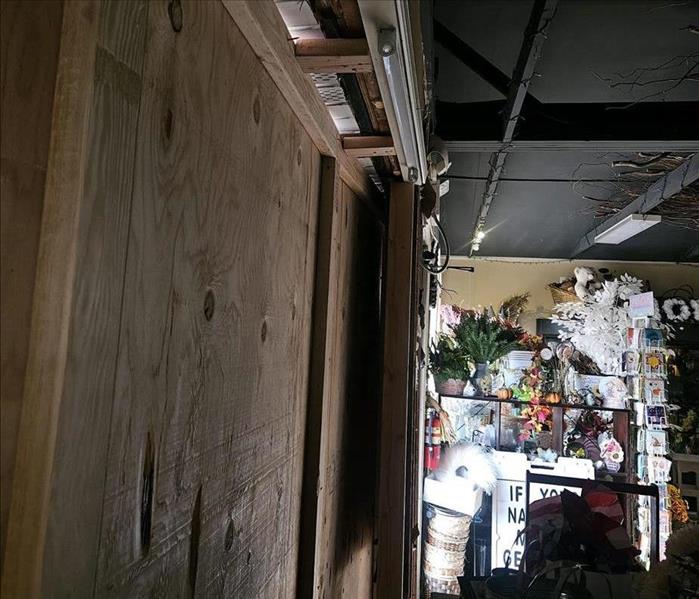 Explore the importance of annual fire safety inspections and how they benefit your commercial property.
Explore the importance of annual fire safety inspections and how they benefit your commercial property.
Fire safety is a critical concern for any commercial property owner or manager in Sicklerville, NJ. Ensuring that your building meets fire safety standards not only protects your business and assets but also the lives of your employees and customers. One of the most effective ways to maintain a safe commercial environment is through regular, annual fire safety inspections. At SERVPRO®, we understand the vital role these inspections play in minimizing fire risks and ensuring compliance with local regulations. In this blog, we’ll explore the importance of annual fire safety inspections and how they benefit your commercial property.
Why Annual Fire Safety Inspections Are Critical
Commercial buildings are subject to a range of fire safety regulations and standards, all designed to minimize the risk of fires and ensure a safe environment. Annual fire safety inspections help identify potential fire hazards, ensure compliance with fire codes, and assess the overall preparedness of your building to handle a fire emergency.
According to the National Fire Protection Association (NFPA), in 2022, local fire departments responded to an estimated 1.5 million fires in the United States, including fires in commercial buildings.
Key Benefits of Annual Fire Safety Inspections
Having your commercial building inspected annually for fire safety is essential for identifying fire hazards before they lead to potential damage. Below are some of the key benefits of scheduling these critical inspections:
1. Ensuring Compliance with Local Fire Codes
Fire safety codes vary by location, and they are designed to keep your building up to date with the latest fire protection standards. Annual inspections help you ensure that your commercial building complies with these codes. Non-compliance can lead to fines, legal issues, or even business shutdowns. Regular inspections help you avoid these risks by identifying and addressing any areas where your building may fall short of fire safety standards.
2. Early Detection of Fire Hazards
One of the main goals of an annual fire inspection is to detect any fire hazards that may have developed over time. Common hazards include faulty wiring, overloaded circuits, blocked fire exits, and outdated fire extinguishers. By identifying these issues early, you can address them before they escalate into more serious problems, ultimately reducing the risk of a fire.
3. Proper Maintenance of Fire Protection Equipment
Fire protection equipment, such as smoke detectors, fire alarms, fire extinguishers, and sprinkler systems, plays a crucial role in fire safety. However, these systems require regular maintenance to remain functional. During an annual fire inspection, professionals will check that all equipment is up to date, properly maintained, and ready to activate in the event of a fire. This ensures that your building is equipped to handle an emergency situation effectively.
4. Enhancing Occupant Safety
The safety of your employees, customers, and tenants should be your top priority as a commercial property owner or manager. An annual fire safety inspection helps to ensure that your building provides a safe environment for all occupants by identifying and addressing fire risks. This proactive approach can significantly reduce the chance of a fire-related incident and give occupants peace of mind knowing that safety measures are in place.
5. Minimizing Potential Property Damage
Fires can cause extensive damage to commercial properties, leading to costly repairs, business interruptions, and potential losses. Regular inspections help minimize the risk of fire by identifying and correcting fire hazards early. In the event of a fire, having a properly maintained fire suppression system and clear fire exits can significantly reduce the damage to your building.
6. Lower Insurance Premiums
Commercial property insurance companies often offer lower premiums to businesses that take proactive steps toward fire safety. By demonstrating a commitment to regular fire safety inspections and proper equipment maintenance, you can potentially reduce your insurance costs while maintaining a safer work environment.
What to Expect During an Annual Fire Safety Inspection
An annual fire safety inspection typically involves a thorough assessment of several key areas within your commercial building. Here are the main elements that professionals will check:
- Fire Protection Systems: Inspectors will check the functionality of smoke detectors, fire alarms, sprinkler systems, and fire extinguishers to ensure they are up-to-date and fully operational.
- Fire Exits: All fire exits and escape routes will be evaluated to ensure they are unobstructed and clearly marked.
- Electrical Systems: Wiring, electrical panels, and circuits will be checked for any potential fire hazards, such as overloading or faulty connections.
- Building Structure: Inspectors will assess the overall fire resistance of the building, including fire-rated doors, windows, and walls, to ensure they meet safety standards.
- Fire Safety Plan: The building’s fire evacuation plan will be reviewed to ensure that all occupants know how to safely exit the building in the event of a fire.
Conclusion
Annual fire safety inspections are essential for maintaining a safe and compliant commercial building. By ensuring that your fire protection systems are functional, identifying and addressing potential fire hazards, and keeping your building in line with local fire codes, you can minimize the risk of fire damage and enhance the overall safety of your property. At SERVPRO, we are committed to helping commercial property owners protect their investments and maintain fire-safe environments. Reach out to us today to learn more about our fire safety services and how we can assist you in safeguarding your building.
Incorporating regular fire safety inspections into your building’s maintenance routine is a simple yet effective way to reduce fire risks, protect your assets, and ensure compliance with fire safety standards. Don’t wait until it’s too late—schedule your annual fire safety inspection today!
Mold and Indoor Plants: Expert Tips for Keeping Your Greenery Mold-Free
11/13/2024 (Permalink)
 Thankfully, with proper care and some expert tips, you can keep your indoor plants mold-free and thriving.
Thankfully, with proper care and some expert tips, you can keep your indoor plants mold-free and thriving.
Indoor plants bring a sense of peace and beauty into any home or office in Sicklerville, NJ, improving air quality and offering a calming environment. However, mold growth on and around plants can quickly tarnish their appeal and even lead to long-term maintenance issues for your home. If you've noticed mold forming in your indoor garden, you're not alone. Mold thrives in warm, moist environments, making indoor plants a common hotspot. Thankfully, with proper care and some expert tips, you can keep your indoor plants mold-free and thriving.
Why Mold Grows on Indoor Plants
Mold on indoor plants is often the result of excessive moisture. Overwatering, poor ventilation, and inadequate light conditions create the perfect environment for mold spores to settle and grow. Mold tends to thrive in damp soil or on plant surfaces where humidity levels are high. While mold doesn't harm the plant in small quantities, it can still be an unsightly issue and a sign that care practices need to be adjusted.
Did you know that mold can start to grow within 24 to 48 hours in the right conditions? According to the Environmental Protection Agency (EPA), controlling moisture is the key to preventing mold growth indoors. This same principle applies when caring for indoor plants. Learn more about mold and moisture control.
Tips for Keeping Your Indoor Plants Mold-Free
Maintaining mold-free indoor plants is all about creating the right environment and care routine. Here are some expert tips that will help keep mold at bay while ensuring your plants continue to thrive:
1. Monitor Watering Habits
Overwatering is one of the leading causes of mold growth in indoor plants. Mold loves soggy, waterlogged soil. To prevent this:
- Allow the top layer of soil to dry out before watering again.
- Use pots with proper drainage holes to allow excess water to escape.
- Avoid letting your plants sit in standing water in saucers or trays.
2. Ensure Proper Air Circulation
Good airflow can help dry out excess moisture and discourage mold growth.
- Place your plants in areas with good ventilation.
- Use fans or open windows to promote better air circulation in rooms with high humidity levels.
3. Provide Adequate Lighting
Mold thrives in dark, damp spaces. Ensure your plants receive the right amount of sunlight.
- Place plants near windows or use grow lights for additional lighting.
- Rotate plants regularly to ensure even light distribution, which helps prevent mold from forming on the shaded side of the plant.
4. Use Well-Draining Soil
Soil that holds too much water creates the perfect environment for mold. Use a soil mix that drains well to avoid waterlogging.
- Consider adding perlite, sand, or bark to the soil to improve drainage.
- Repot your plants if necessary, replacing old, soggy soil with fresh, well-draining mix.
5. Remove Dead Plant Material
Dead leaves or plant debris can trap moisture and encourage mold growth.
- Regularly prune dead or decaying leaves and stems from your plants.
- Keep the soil surface clean by removing any fallen plant matter.
6. Treat Mold Early
If you notice mold beginning to form, treat it right away before it spreads.
- Scrape off any visible mold from the soil's surface.
- Wipe down plant leaves with a mixture of water and mild dish soap to remove surface mold.
- Use a natural fungicide, like neem oil, to treat persistent mold problems without harming your plants.
Additional Considerations for a Mold-Free Indoor Garden
Prevention is key to keeping mold away from your indoor plants. In addition to the tips above, consider the following:
- Use a dehumidifier: If your home tends to be humid, consider using a dehumidifier in rooms where your plants are located to reduce moisture levels.
- Choose the right plants: Some plants, such as succulents, require less water and are less prone to mold growth compared to moisture-loving plants like ferns.
Conclusion
Keeping your indoor plants mold-free is not only achievable but essential for their long-term health. By following these expert tips—adjusting watering habits, improving ventilation, and staying vigilant with plant care—you can enjoy a lush, vibrant indoor garden without the worry of mold growth. Remember, the key to a healthy indoor garden is a balance between moisture, light, and airflow. Take the time to maintain that balance, and your plants will reward you with their beauty and vitality.
At SERVPRO®, we understand the importance of preventing mold growth in every part of your home, including your indoor garden. Stay proactive, and keep your indoor greenery mold-free all year round!
How to Prevent and Treat Mold Growth After Water Damage
10/13/2024 (Permalink)
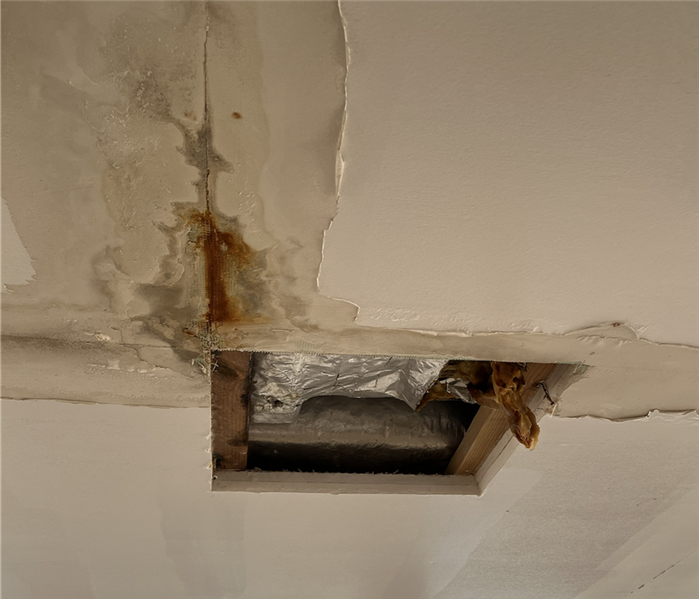 Mold growth after water damage is a serious issue that requires immediate attention.
Mold growth after water damage is a serious issue that requires immediate attention.
Water damage is a significant concern for homeowners and one of the most persistent problems that can arise after a water loss is mold growth. Mold can begin to develop within 24-48 hours of exposure to moisture, making it crucial to act quickly. Here’s a guide for residents of Egg Harbor Township, NJ, on how to prevent and treat mold growth after water damage.
Understanding Mold Growth
Mold thrives in damp, humid environments. After water damage from leaks, floods, or even high humidity, mold spores can settle and multiply on various surfaces, including walls, ceilings, and floors. Mold not only damages property but can also cause unpleasant odors and other complications if left untreated.
Prevention Tips
Preventing mold growth after water damage involves a series of proactive steps. Here’s what you can do:
- Act Quickly
The faster you respond to water damage, the lower the risk of mold growth. Begin water removal and drying as soon as possible.
- Remove Standing Water
Use pumps, wet/dry vacuums, and towels to remove standing water. This immediate action can prevent water from seeping into walls and flooring.
- Dry and Dehumidify
After removing standing water, dry out the affected areas using fans and dehumidifiers. Maintaining indoor humidity levels below 60% can prevent mold growth.
- Clean and Disinfect
Clean and disinfect all surfaces exposed to water. Use mold-killing products to ensure that mold spores are eliminated.
- Dispose of Damaged Materials
Dispose of porous materials like carpets, insulation, and drywall that cannot be adequately dried and cleaned. These materials can harbor mold spores and become sources of future mold growth.
Treatment Methods
If mold has already started to grow, it’s essential to address it promptly and effectively. Here are some treatment methods:
- Identify and Isolate
Identify the affected areas and isolate them to prevent mold spores from spreading. Use plastic sheeting and tape to seal off the contaminated space.
- Use Protective Gear
When dealing with mold, wear protective gear such as gloves, masks, and goggles to avoid exposure to mold spores.
- Scrub and Clean
Scrub mold off hard surfaces with water and detergent. Be sure to dry the area completely to prevent mold from returning.
- HEPA Vacuum
Use HEPA vacuums to clean up mold spores. These vacuums are designed to capture tiny particles, including mold spores.
- Professional Help
For extensive mold infestations, it’s best to seek professional help. Mold remediation specialists have the tools and expertise to remove mold safely and effectively.
Why SERVPRO®?
At SERVPRO of Egg Harbor/Ventnor City, we understand the urgency and complexity of dealing with mold after water damage. Our team of experienced professionals is equipped with the latest tools and techniques to handle mold remediation efficiently. We work quickly to restore your home to a safe and comfortable condition.
Protect Your Home from Mold
Mold growth after water damage is a serious issue that requires immediate attention. By taking action and following prevention and treatment steps, you can protect your home from mold. If you encounter mold problems, don’t hesitate to contact our SERVPRO of Egg Harbor/Ventnor City team. We’re here to help you restore your home and peace of mind!
Winter Storm Survival Guide: Preparing Your Home in the Northeast
9/11/2024 (Permalink)
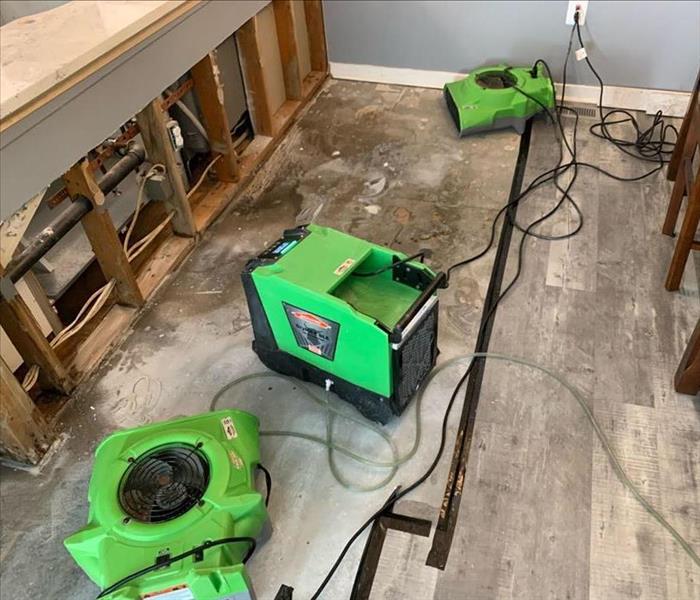 This survival guide will help you get your home ready for the winter season.
This survival guide will help you get your home ready for the winter season.
Winter storms can bring harsh conditions in Winslow Township, NJ, making it essential to prepare your home to withstand the impact. For residents in the Northeast, particularly in New Jersey, where winter storms are a frequent occurrence, taking proactive measures can prevent damage and ensure safety. This survival guide will help you get your home ready for the winter season.
Understanding the Impact of Winter Storms
Winter storms can cause significant disruptions, including power outages, blocked roads, and home damage. According to the New Jersey Office of Emergency Management, the state experiences an average of 25 winter weather events each season, underscoring the importance of preparedness.
Essential Preparations for Your Home
1. Insulate and Weatherproof
Proper insulation keeps your home warm and reduces the risk of pipes freezing. Check your windows and doors for drafts and seal any gaps to keep the cold air out.
2. Roof and Gutter Maintenance
Heavy snow and ice can cause roofs to collapse and gutters to clog. Ensure your roof is in good condition, and clear of any debris, and consider installing gutter guards to prevent ice dams.
3. Emergency Supplies
Prepare an emergency kit with essentials such as:
- Non-perishable food and water: Ensure you have at least a three-day supply.
- First-aid kit: Include necessary medications and medical supplies.
- Battery-powered radio: Stay informed about weather updates.
- Flashlights and extra batteries: Power outages are common during winter storms.
4. Heating System Check
Have your heating system inspected by a professional to ensure it is working efficiently. Stock up on fuel if you use a fireplace or wood-burning stove, and make sure it is clean and safe to use.
5. Generator Safety
If you have a generator, ensure it is in good working condition and that you know how to use it safely. Never operate a generator indoors to avoid carbon monoxide poisoning.
Winter Storm Safety Tips
1. Stay Informed
Keep an eye on weather forecasts and warnings. Sign up for local alerts to stay updated on storm developments.
2. Develop a Family Emergency Plan
Create a plan that includes emergency contacts, a meeting place, and evacuation routes. Make sure all family members are aware of the plan.
3. Protect Your Plumbing
Allow faucets to drip to prevent pipes from freezing and bursting. Know how to shut off your water supply in case of an emergency.
4. Keep Your Home Accessible
Ensure walkways and driveways are clear of snow and ice. Have salt or sand on hand to improve traction and prevent slips and falls.
Conclusion
Preparing your home for winter storms is crucial to ensure the safety and comfort of your family. By taking these steps, you can minimize the risks associated with severe winter weather. For comprehensive support in preparing your home and dealing with storm damage, trust SERVPRO® to provide expert assistance and restoration services.
Remember, the key to surviving winter storms is preparation. Equip your home with the necessary supplies, maintain your heating system, and stay informed to face the winter season with confidence. Stay safe and warm this winter!
How to Safely Store Flammable Chemicals and Materials: Essential Tips for Homeowner
8/14/2024 (Permalink)
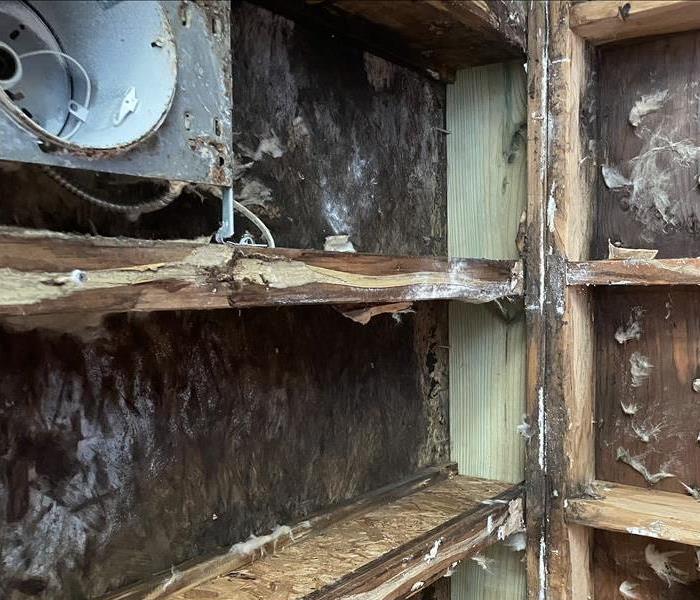 We provide you with essential tips on how to safely store flammable chemicals and materials to protect your home and loved ones.
We provide you with essential tips on how to safely store flammable chemicals and materials to protect your home and loved ones.
Proper storage of flammable chemicals and materials is crucial for maintaining a safe home environment in Sicklerville, NJ. Improper handling can lead to dangerous situations, including fires and explosions. In this blog, we will provide you with essential tips on how to safely store flammable chemicals and materials to protect your home and loved ones.
Understanding Flammable Materials
Flammable materials are substances that can easily ignite and burn. Common examples include gasoline, propane, solvents, and certain cleaning products. These materials pose significant risks if not stored correctly, making it essential to understand how to handle them safely.
Tips for Safe Storage of Flammable Chemicals
Use Approved Containers
Always store flammable chemicals in containers specifically designed for that purpose. Approved containers are made from materials that can withstand the chemicals' properties and prevent leaks. Look for containers with tight-fitting lids to minimize the risk of spills and vapors escaping.
Label All Containers
Proper labeling is critical when storing flammable chemicals. Clearly mark each container with the chemical's name and any associated hazards. This will help you and others identify the contents quickly and take appropriate precautions.
Choosing the Right Storage Location
Store in a Well-Ventilated Area
Flammable chemicals should be stored in a well-ventilated area to prevent the buildup of hazardous vapors. Ventilation helps disperse fumes and reduces the risk of ignition. Avoid storing these materials in confined spaces, such as basements or attics, where vapors can accumulate.
Keep Away from Heat Sources
Heat sources, such as stoves, heaters, and direct sunlight, can increase the risk of ignition for flammable chemicals. Store these materials in a cool, dry place away from any potential sources of heat. This will help maintain a safe storage environment.
Maintaining a Safe Storage Environment
Regularly Inspect Storage Areas
Routine inspections of storage areas are essential for ensuring ongoing safety. Check for any signs of leaks, corrosion, or damage to containers. Address any issues immediately to prevent potential hazards.
Implement Fire Safety Measures
Equip your storage area with fire safety measures, such as fire extinguishers and smoke detectors. Ensure that everyone in your household knows the location of these devices and how to use them in case of an emergency.
Proper Disposal of Flammable Chemicals
Follow Local Regulations
Improper disposal of flammable chemicals can harm the environment and pose safety risks. Follow local regulations for disposing of these materials. Many communities offer hazardous waste disposal programs to help you safely get rid of flammable chemicals.
Avoid Pouring Down Drains
Never pour flammable chemicals down drains or into the trash. These actions can lead to environmental contamination and increase the risk of fires. Always use designated disposal methods to ensure safe handling.
Safely storing flammable chemicals and materials is crucial for preventing accidents and maintaining a secure home environment. By using approved containers, choosing appropriate storage locations, and following proper disposal methods, you can significantly reduce the risks associated with these hazardous substances. Stay proactive and vigilant in your storage practices to protect your home and loved ones.
For more information on fire safety and restoration services, visit SERVPRO® today.
Dealing with Mold in Insulation: Strategies for Detection and Remediation
7/10/2024 (Permalink)
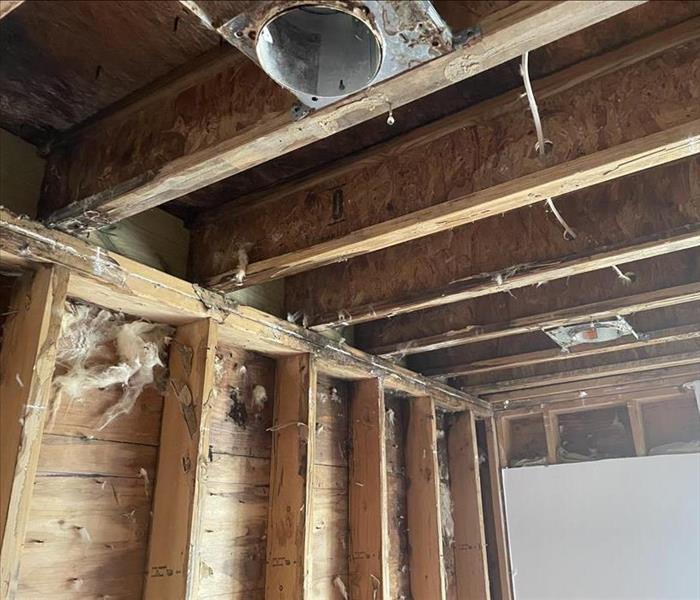 We discuss the challenges of dealing with hidden mold in insulation and provide practical strategies for detection and remediation.
We discuss the challenges of dealing with hidden mold in insulation and provide practical strategies for detection and remediation.
Mold growth in insulation can be a challenging issue to tackle, especially when it's hidden from plain sight. Insulation provides an ideal environment for mold to thrive, as it can trap moisture and organic materials. Identifying and addressing mold in insulation is crucial for maintaining a healthy indoor environment. In this blog post, we'll discuss the challenges of dealing with hidden mold in insulation and provide practical strategies for detection and remediation.
Challenges of Hidden Mold in Insulation
Concealed Growth
Mold can proliferate within insulation materials without being readily visible. Since insulation is typically installed within walls, ceilings, or floors, mold growth may go unnoticed for extended periods, allowing it to spread and cause damage.
Trapped Moisture
Insulation can trap moisture from leaks, condensation, or high humidity levels, creating an environment conducive to mold growth. Once moisture becomes trapped within the insulation, it can promote the proliferation of mold spores, even in areas with limited airflow.
Structural Impact
Mold growth within insulation can compromise its effectiveness and structural integrity. As mold colonies consume organic materials within the insulation, they can weaken its structure and reduce its thermal insulation properties, leading to potential energy inefficiency and structural damage.
Detection Strategies for Mold in Insulation
Visual Inspection
Perform a thorough visual inspection of accessible insulation areas for signs of mold growth. Look for discoloration, musty odors, or visible mold growth on the surface of insulation materials.
Moisture Testing
Use moisture meters or infrared cameras to detect hidden moisture within the insulation. Elevated moisture levels can indicate potential mold growth, even in the absence of visible signs.
Air Sampling
Consider conducting air sampling tests to detect mold spores in indoor air. While air sampling may not directly identify mold within insulation, it can provide valuable insights into overall indoor air quality and the presence of mold contamination.
Remediation Techniques for Mold in Insulation
Professional Assessment
If mold growth is suspected in insulation, seek the expertise of a professional mold remediation company like SERVPRO®. Trained technicians can conduct a comprehensive assessment to determine the extent of the mold problem and recommend appropriate remediation measures.
Removal and Replacement
In cases of extensive mold contamination, removal and replacement of affected insulation may be necessary. Professional remediation technicians can safely remove contaminated insulation and install new, mold-resistant insulation materials.
Moisture Control
Address underlying moisture issues to prevent mold recurrence in insulation. Implement moisture control measures such as repairing leaks, improving ventilation, and reducing humidity levels to create an inhospitable environment for mold growth.
Dealing with mold in insulation requires careful detection and remediation to ensure a healthy indoor environment. By being vigilant for signs of mold growth, employing detection strategies, and seeking professional remediation assistance when needed, you can effectively address hidden mold in insulation and maintain a clean and mold-free home or building.
Dealing with Mold and Mildew After Water Damage: Essential Steps for Homeowners
6/5/2024 (Permalink)
Water damage can have lingering effects long after the visible signs of moisture have been addressed. Mold and mildew, which thrive in damp environments, pose significant health risks and can cause further damage to your home if left untreated. In the aftermath of water damage, it's essential for homeowners to understand how to effectively handle mold and mildew growth to ensure a safe and healthy living environment. In this blog, we'll discuss the essential steps for dealing with mold and mildew after water damage and preventing their recurrence.
Assessing the Damage
After water damage occurs, it's crucial to assess the extent of the damage and identify areas where mold and mildew may be present. Inspect walls, ceilings, floors, and hidden areas such as crawl spaces and attics for signs of mold growth, including discoloration, musty odors, and visible mold patches. Take note of any areas that appear damp or show signs of water intrusion, as these are prime breeding grounds for mold and mildew.
Thorough Drying
Proper drying is essential for preventing mold and mildew growth after water damage. Use fans, dehumidifiers, and ventilation to facilitate air circulation and expedite the drying process. Remove water-damaged materials such as carpets, insulation, and drywall that cannot be thoroughly dried and may promote mold growth. Ensure that all affected areas are completely dry before proceeding with cleanup and restoration efforts.
Cleaning and Disinfecting
Once the affected areas are dry, it's time to clean and disinfect surfaces to remove any mold and mildew present. Use a solution of water and detergent to scrub mold-affected surfaces thoroughly, then rinse with clean water and allow to dry completely. For more stubborn mold growth, consider using commercial mold removal products or hiring professional mold remediation services to ensure thorough cleanup and disinfection.
Addressing Air Quality
In addition to cleaning surfaces, it's essential to address indoor air quality to remove airborne mold spores and prevent their spread. Use HEPA air purifiers and ventilation systems to filter and circulate indoor air, reducing the concentration of mold spores and improving overall air quality. Keep humidity levels below 60% to inhibit mold and mildew growth and prevent future moisture-related issues.
Preventive Measures
To prevent mold and mildew from returning after water damage, take proactive measures to mitigate moisture and humidity levels in your home. Fix any leaks or sources of water intrusion promptly, such as leaking pipes, roof leaks, or inadequate ventilation. Maintain proper ventilation in bathrooms, kitchens, and other high-humidity areas to prevent condensation buildup. Insulate pipes and surfaces to prevent moisture condensation and reduce the risk of mold growth.
Monitoring and Maintenance
After addressing water damage and mold remediation efforts, it's essential to monitor your home regularly for signs of mold and mildew recurrence. Keep an eye out for musty odors, visible mold growth, and moisture-related issues that may indicate ongoing water damage or ventilation problems. Conduct routine inspections and maintenance to ensure that your home remains dry, clean, and mold-free.
Dealing with mold and mildew after water damage requires careful attention to detail and proactive measures to prevent their recurrence. By assessing the damage, thoroughly drying affected areas, cleaning and disinfecting surfaces, addressing indoor air quality, implementing preventive measures, and monitoring for signs of recurrence, homeowners can effectively manage mold and mildew growth and maintain a safe and healthy living environment for themselves and their families. Don't let mold and mildew linger after water damage – take swift action to ensure a clean, dry, and mold-free home.
After the Storm: Assessing Tree Damage After a Storm or Windstorm
5/9/2024 (Permalink)
Storms, with their powerful winds and torrential rains, can wreak havoc on landscapes, and one of the most common casualties is trees. After a storm passes, it's crucial to assess tree damage promptly to ensure safety and prevent further complications. In this guide, we'll walk you through the essential steps of evaluating and addressing tree damage after a storm or windstorm.
Safety First
Before diving into the assessment, prioritize safety. Be cautious of downed power lines, hanging branches, and unstable trees. Stay away from any trees that are leaning or visibly damaged until you can confirm their stability.
Walk around your property and assess the overall damage. Note any trees that may have fallen or have sustained significant damage. Look for uprooted trees, broken branches, and any trees that may pose an immediate threat to structures or people.
Inspect Tree Trunks
Examine the trunks of standing trees for signs of damage. Look for cracks, splits, or other structural issues. If a tree has a compromised trunk, it may be unstable and pose a risk of falling.
Inspect trees for uprooting, which can occur in saturated soil. Uprooted trees are often unstable and may require professional attention to assess their viability or safely remove them.
Assess Branch Damage
Examine the branches for breakage or splitting. Pay special attention to large, overhanging limbs that could fall and cause harm. Remove any hanging or loosely attached branches to prevent them from falling later.
A tree's stability is closely tied to its root system. Assess the area around the tree for signs of soil upheaval or root damage. Compromised roots can affect the tree's ability to remain upright.
Consider Tree Lean
Trees leaning at an unusual angle may indicate structural instability. Assess the degree of lean and the direction it's leaning. Trees leaning toward structures or high-traffic areas may require immediate attention.
Storms can cause trunks to split, creating a hazardous condition. If you notice a split trunk, consult with a professional arborist to determine the best course of action, whether it's pruning, cabling, or removal.
Consult a Professional Arborist
If you're uncertain about the extent of the damage or the safety of a tree, it's wise to consult with a certified arborist. They can provide a thorough evaluation and recommend appropriate measures.
Once you've assessed the damage, prioritize cleanup efforts. Remove debris carefully, and enlist professional help for large or hazardous tasks. Be mindful of equipment use to prevent further damage to trees or surrounding vegetation.
Prune Damaged Branches
Trim damaged branches using proper pruning techniques. Make clean cuts just outside the branch collar to promote healing. Remove any broken or hanging branches that could pose a threat.
In severe cases where a tree is extensively damaged, diseased, or poses a safety risk, removal might be the best option. Consult with an arborist to make an informed decision about tree removal.
Take Preventative Measures
Learn from the storm and consider preventative measures for the future. Regular tree maintenance, including pruning and inspections, can enhance a tree's resilience against storms.
If applicable, document tree damage for insurance purposes. Take photographs of the damage, and keep records of any professional assessments or services performed on the trees.
By following these steps, you'll be equipped to assess tree damage after a storm and take appropriate action to ensure the safety and health of your landscape. Whether it's pruning, cabling, or removal, addressing tree damage promptly can contribute to the long-term well-being of your property.
Differences in fire damage restoration for homes versus commercial properties
4/19/2024 (Permalink)
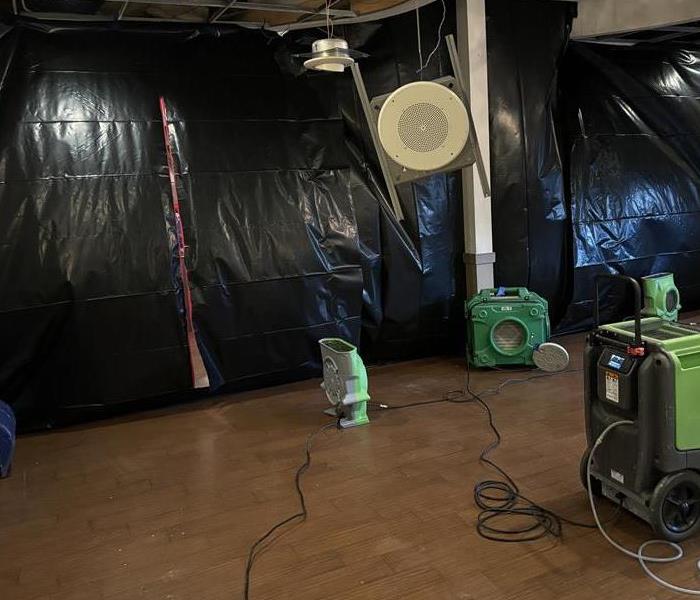 SERVPRO is ready to help with your fire disaster anytime day or night!
SERVPRO is ready to help with your fire disaster anytime day or night!
As a leading expert in fire damage restoration, SERVPRO® understands that each fire incident is unique, and the approach to restoration must be tailored to the specific property type. Whether it's a residential haven or a bustling commercial space, the nuances in fire damage restoration can significantly impact the recovery process. In this blog post, we'll delve into the key differences between restoring homes and commercial properties after a fire, offering insights that can make a crucial difference in the aftermath.
Structural Complexity
One of the primary distinctions lies in the structural complexity of homes versus commercial properties. Residential structures often have a simpler layout compared to commercial spaces, which can feature intricate designs, multiple levels, and various interconnected systems. This complexity demands a more comprehensive assessment and strategic restoration plan for commercial properties.
Size Matters
The size of the affected area is another critical factor to consider. Residential fires tend to be more contained, affecting specific rooms or sections of the house. In contrast, commercial fires may engulf larger spaces, affecting multiple rooms, floors, or even the entire building. This requires a scalable restoration strategy that can efficiently address the extensive damage seen in commercial settings.
Business Interruption
Commercial properties not only face the physical challenges of fire damage but also the potential for significant business interruption. Time is of the essence in these situations, as extended downtime can result in financial losses and client dissatisfaction. SERVPRO recognizes the need for swift and efficient restoration in commercial spaces, working diligently to minimize disruption and get businesses back on track.
Regulatory Compliance
Commercial properties often need to adhere to specific building codes and regulations that may not apply to residential structures. Navigating these regulatory requirements is a crucial aspect of commercial fire damage restoration. SERVPRO's team is well-versed in local codes and compliance standards, ensuring that the restoration process aligns with all necessary regulations.
Specialized Equipment
Given the differences in scale and complexity, commercial fire damage restoration may require specialized equipment not typically used in residential settings. SERVPRO invests in state-of-the-art technology and tools to handle the unique challenges posed by commercial properties, ensuring a thorough and efficient restoration process.
Understanding the divergences between fire damage restoration for homes and commercial properties is essential for a successful recovery. SERVPRO is committed to providing tailored solutions for every scenario, prioritizing efficiency, and minimizing the impact on our clients' lives and businesses. If you're facing the aftermath of a fire, trust SERVPRO to handle the complexities and bring your property back to preloss condition swiftly and effectively.




 24/7 Emergency Service
24/7 Emergency Service







